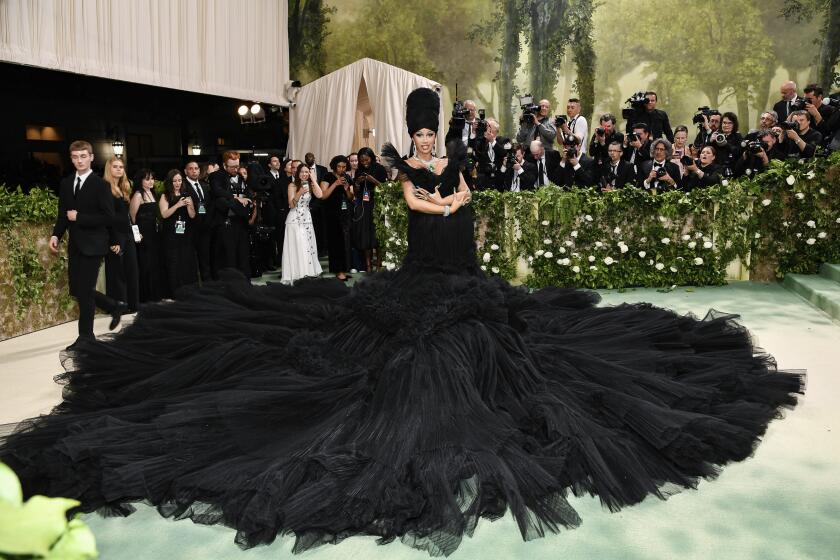The Collection Might Be Blue-Chip, but Beware the Stock
The public may be fascinated by the latest clothing fashions and flops in magazines like Vogue and Elle. But when it comes to the stocks of the high-profile companies that make those fashions, it’s been a bumpy year.
Four companies in the fashion world went public within the last year, taking advantage of a surging stock market: Mossimo Inc., the Irvine company that designs and markets sports and active wear for men and women; Guess Inc., the Los Angeles maker of jeans and other casual wear; Designer Holdings Ltd., maker of Calvin Klein Jeans for men and women; and Donna Karan International Inc., designer and manufacturer of Donna Karan New York and DKNY.
Fashion-industry experts say other designer-clothing companies can’t be far behind, because those four companies made millions on their initial public offerings of stock. European designer Gianni Versace has announced that he plans a public offering in 1998, and Ralph Lauren is considering taking his empire public as early as this month, according to trade publications.
But the outcome thus far for those who bought the stocks of the four companies that went public has not been a happy one, even before this week’s market slide. Donna Karan stock plummeted, falling up to 54% since it came out in June at $24 a share. It closed on Tuesday at $9 1/8. Designer Holdings’ shares also have tumbled. The Calvin Klein jeans maker was offered in May at $18, quickly rose to $34 but closed Tuesday at $7 3/4.
The buoyancy of the market helped many of these fashion companies do well initially, but people didn’t ask enough questions about the real, long-term plans of the companies, said Faye Landes, a Smith Barney analyst.
“The track record [for fashion stocks] is deplorable,” said Alan Millstein, a New York-based retail consultant. “Like the movie companies, they have big ups and big downs.”
*
Yet the public obviously likes to buy stock in fashion companies, as their initial market receptions attest. Perhaps, industry experts said, investors think that they’re taking part in the glamorous world of high fashion. “There’s a fascination with fashion,” Landes said. “It’s a sexy industry, and it’s easy to generate interest because of the celebrity factor.”
But it’s not always easy to keep that interest if things go wrong. “People bought stocks in Donna Karan because she’s a high-profile name,” Millstein said. “But she has one bad quarter, and the guys in the Armani suits--the analysts, rainmakers and tom-tom boys--fled.”
Then there’s the management-by-creative-genius factor. “All the designers like to be creative and design things,” Landes said. “The question is, Do they know how to run a business?”
There’s another basic reason some of the high-profile, high-fashion stocks may not be doing well: the aging of the vast population of baby boomers who have money to spend on clothes. As Americans get older, they don’t place so much emphasis on fashion, analysts say.
Not all high-fashion companies did poorly over the last 12 months. The well-managed companies, many of which have been public for some time, exploded, said Todd D. Slater, an analyst at Lazard Freres & Co.
Companies such as Liz Claiborne, Tommy Hilfiger, St. John’s Knits, Jones New York and Gucci have done very well in the boom market, while the newer publicly traded companies have slid.



